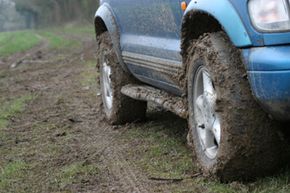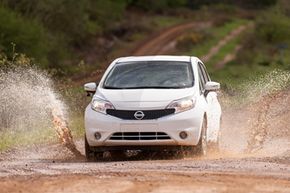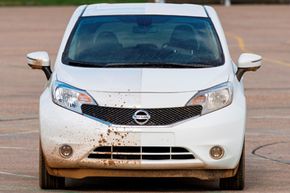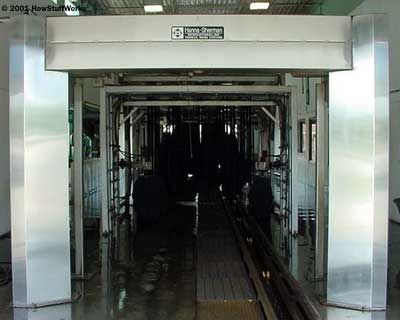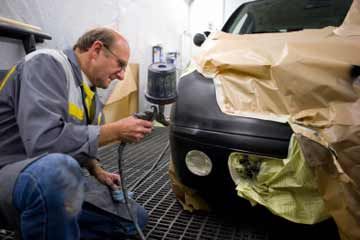Next time you get in your car, take a quick look at the front end. Unless it's been washed very recently, chances are it's covered in bird poop, pollen dust, the remnants of high-speed insect collisions, or, at best, stains and spots from dirty acid rain. Sorry about that.
Traditional paints lack the ability to repel dirt and other contaminants, which leads to the dirt and dullness that we see on practically every coated surface. But in the near future, new cars might come equipped with a new type of finish that's designed to keep road debris, oil, gunk and even water from sticking to and drying on the paint's surface. This new coating, called self-cleaning paint, is hydrophobic, which means it repels water, and oleophobic, which means it repels oil. Not only will these specially painted cars look better on a day-to-day basis, they'll also be protected longer from some of the general, long-term wear and tear that occurs when the car's outermost paint layers eventually degrade from environmental damage. Contaminants like bird droppings and acid rain can build-up and weaken the clear coat and paint layers, which can eventually make the car's underlying metal surfaces more susceptible to rust and other damage. The new self-cleaning paint, however, aims to reduce the impact of such damage.
Advertisement
Eager to get your hands on a new car with self-cleaning paint? Well, the bad news is that they're not ready -- not yet, anyway. But we're going to take a closer look at what inspired this new automotive finish, the technology that makes it possible, and what else has to happen before it's ready for prime time. The paint was developed at the Nissan Technical Centre in the United Kingdom in conjunction with a nanotechnology firm called Nano Labs. Nissan has to thoroughly test the paint before it gets the official approval to be applied to new cars, so researchers at the brand's testing facility in England will spend the summer of 2014 studying how the self-cleaning paint holds up on a Nissan Versa Note.
